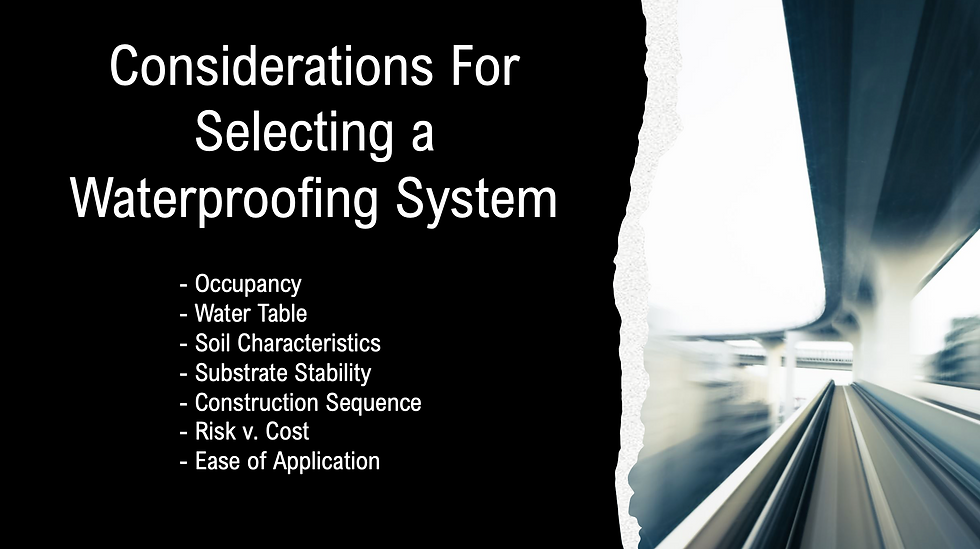Vapor Barrier - Spray Applied with IWS Waterproofing Grade
- IWS
- Oct 3, 2018
- 2 min read
Updated: Sep 26, 2019
Vapor Barriers are a necessary element in building construction in certain climates, as they can help limit the amount of moisture allowed into or out of a building. Considering the climate and the interior HVAC system proposed, engineers and architects will specify materials to be used in the building enclosure. The permeance of vapor barriers or vapor retarders, as well as air barriers and other building materials including concrete and even paint are considered to regulate the amount of moisture inside of a building. These materials are categorized by the permeance measurement (perm), which is the resistance of moisture movement when vapor pressure occurs between the interior and exterior of the material. Materials are generally defined in the following classifications:
Class I - Vapor impermeable: less than or equal to 0.1 perm
Class II - Vapor semi-impermeable: less than or equal to 1 perm and greater than 0.1 perm
Class III - Vapor semi-permeable: 10 perm or greater than 1 perm
Class IIII – Vapor permeable: greater than 10 perm
* The test procedure for perm rating is the ASTM E-96 Test Method A (the desiccant method or dry cup method) by ASTM International.

A vapor barrier material falls into the Class I perm rating category. With the objective of many engineers, architects and construction professionals of keeping water out of building enclosures, the correct use of a class I vapor barrier in building enclosures can help alleviate moisture related problems. One of the many applications of the IWS Waterproofing spray grade material is it being used as a vapor barrier in building envelope construction. When applied in the seamless spray application process for vapor barrier, it can be a high performing and cost-effective option, saving time and labor costs.







Comments